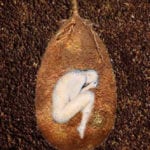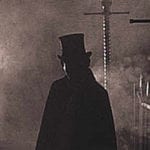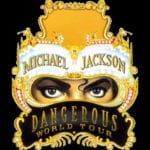 Mysteries
Mysteries  Mysteries
Mysteries  History
History 10 Surprising Stories About the Texas Rangers
 Humans
Humans 10 Philosophers Who Were Driven Mad by Their Own Theories
 Miscellaneous
Miscellaneous 10 Video-Game-Worthy Weapons and Armors from History
 Weird Stuff
Weird Stuff 10 Psychics Who Accurately Predicted Wartime Events
 The Arts
The Arts 10 Pieces of Art Inspired by a Broken Heart
 Health
Health 10 Science Fiction-Sounding New Medical Treatments
 History
History 10 Surprising Facts About the Father of Submarine Warfare
 Space
Space Ten Astonishing New Insights into Alien Worlds
 Weird Stuff
Weird Stuff 10 Bizarre Summer Solstice Rituals Still Practiced Today
 Mysteries
Mysteries Top 10 Haunting Facts About the Ghost Ship MV Alta
 History
History 10 Surprising Stories About the Texas Rangers
 Humans
Humans 10 Philosophers Who Were Driven Mad by Their Own Theories
Who's Behind Listverse?

Jamie Frater
Head Editor
Jamie founded Listverse due to an insatiable desire to share fascinating, obscure, and bizarre facts. He has been a guest speaker on numerous national radio and television stations and is a five time published author.
More About Us Miscellaneous
Miscellaneous 10 Video-Game-Worthy Weapons and Armors from History
 Weird Stuff
Weird Stuff 10 Psychics Who Accurately Predicted Wartime Events
 The Arts
The Arts 10 Pieces of Art Inspired by a Broken Heart
 Health
Health 10 Science Fiction-Sounding New Medical Treatments
 History
History 10 Surprising Facts About the Father of Submarine Warfare
 Space
Space Ten Astonishing New Insights into Alien Worlds
 Weird Stuff
Weird Stuff 10 Bizarre Summer Solstice Rituals Still Practiced Today
10 Fascinating And Unusual Music Techniques
In Mongolia, a fascinating type of singer is able to take a single note and break it down into its component tones, appearing to sing several different notes at the same time. In the US, an “eepher” uses a type of “hillbilly beatboxing” to make an audience laugh and tap their feet. On the frozen expanses of Russia’s Lake Baikal, a group of percussionists explore the different sounds that the ice makes when they drum on it. What they have in common—as well as the rest of the items on this list—is that they all tap into the universal human connection to sound, rhythm, and music.
This list includes compositional, performance, instrumental, and vocal techniques.
Lake Baikal is the world’s biggest lake by volume of water; it’s so big, in fact, that it contains 1/5th of the world’s unfrozen surface freshwater. It’s also the world’s deepest lake (just over a mile in depth), and is perhaps the world’s oldest as well. Baikal is home to a number of fascinating animals, including one of the only freshwater seal species, as well as an extremely fatty, scaleless, translucent fish called a golomyanka.
But what’s this got to do with music? Well, a Russian percussion group known as “ETHNOBEAT“—from Irkutsk Technical University—sojourned to Lake Baikal in March of 2012 to drum on the frozen surface of Lake Baikal. Watch as the group’s members brave the -20ºC weather to produce a beautiful array of percussive sounds using only their hands and the different types of ice at their disposal. The group owes the project to a piece of clumsiness—Tatiana, the wife of one of the drummers, had previously fallen on her bottom, producing an intriguing musical sound when she hit the surface. From there, a singular concert arose, turning frozen water into a symphony.
Eephing (sometimes spelled eefing) can probably best be understood as a type of “hillbilly beatboxing”—although it predates beatboxing by nearly 100 years. It’s a fast-paced Appalachian singing technique that can be crudlely broken down as 1/3 saying “eef” (or another vowel + f), 1/3 mouth-farting, and 1/3 gasping. Jennifer Sharpe, who profiled legendary eepher Jimmie Riddle on NPR, described it as “a kind of hiccupping, rhythmic wheeze.” It originated in rural farming communities in Tennessee where eephers would imitate the sounds of their pigs and turkeys.
Eephing has never seen much in the way of mainstream success, but got its 15 minutes of fame in 1963 when Riddle was featured on Joe Perkins’s single “Little Eefin’ Annie.” Little Eefin’ Annie reached #76 on the Billboard charts and exposed a generation of listeners to the unique sounds of eephing.
Check out this video for a short eephing lesson from Riddle.
Konnakol—sometimes colorfully referred to as “Indian scat singing” or “Indian beatboxing”—is the South Indian art of vocal percussion. It is a component of “solkattu,” the language of drum syllables, along with “tala” (or “taal”), the percussive part done with the hand on a “mridangam” drum. With tala, the meter is kept with waves, claps, and finger counts, while the musician simultaneously vocalizes the konnakol.
Performers of konnakol learn very complex, systematic, almost grammatical rules and techniques to produce rapid-fire vocal percussion. As with any advanced musical system, it must be seen and heard to be fully appreciated. John McLaughlin, a British musician and guitar virtuoso who studied konnakol and other Indian techniques and styles, said of konnakol: “if you can understand Konnakol—the most superior system of learning rhythm in the world—you can understand any rhythm from any country on the planet.”
Through-composed music refers to a piece of music that does not repeat any part of itself, or does so rarely. Nearly all compositions have musical elements that occur again and again, especially pop music, which has a fairly rigidly set structure that sees relatively few deviations.
Truly through-composed music is fairly rare, but there are a few well-known examples. Schubert wrote a number of “lieds” (romantic German poems set to music), where he wrote different music for every line. Haydn’s “Farewell Symphony” is also through-composed. In popular music, most so-called through-composed pieces do, in fact, have some amount of repeating elements, but are still largely considered to be a part of the genre. Perhaps the best-known example in rock is Queen’s “Bohemian Rhapsody;” the 1975 classic doesn’t have a chorus, and is divided into distinct sections that include elements of folk, rock, hard rocks, opera, and ballad. The Beatles have a number of tunes (including “Happiness is a Warm Gun,” “A Day in the Life”) which are hybrid-like songs that comprise two very distinct parts.
Hollerin’ is an ancient singing tradition whose origins can be traced back as far as the early days of language. It served a practical purpose—to communicate information over long distances. In the 1700s, in North Carolina, loggers hollered to communicated important instructions to one another; it survived for many years in various forms. There are many different purposes to a holler, including distress (danger), communicative (usually a basic greeting), functional (day-to-day farming calls), and expressive (the pure pleasure of hollerin’). Though hollerin’ has been functionally dead for some time, a revival has been under way since 1969 in the form of The National Hollerin’ Contest in Spivey’s Corner, NC. Held on the 3rd Saturday every June, the contest seeks to revive the extinct art and keep its legacy alive.
Field hollering, an African-American cousin to hollerin’, is a type of singing that can be considered a close relative of the “work song.” Believed to be a potential forerunner to the blues, field hollering doesn’t show up on any recordings until the mid-1930s but is known to have much older roots. It involves falsetto, portamento (sliding from one pitch to another), and sudden pitch changes.
Tuvan throat singers accomplish something pretty amazing: they are able to sing multiples pitches simultaneously. These singers—from the Siberian region of Tuva—are using a vocal technique that’s a type of “overtone singing,” a style of singing that exists all over the world. Overtone singing likely originated in Mongolia, in the regions now known as Khovd and Govi-Altai. Traditionally, these “xöömei” have been men, but more and more women are beginning to learn the practice.
When you listen to a piece of throat singing music for the first time, it’s fairly breathtaking, and probably unlike anything you’ve ever heard. The singer begins with a deep, low, guttural droning sound, and then over time he breaks it up into its component tones, amplifying each one separately so it can be heard as a distinct note. It’s a tremendously difficult technique to master, as it involves several different components—throat singers must breathe circularly (see item 2), to allow the voice to be continuous and unbroken, then control various parts of their throat and mouth (lips, tongue, jaw, velum, and larynx) to create echo chambers in their vocal folds. From there they manipulate the sound to create distinct, multi-faceted, and truly unique music.
That wailing, unsettling sound that a banshee makes? That’s called “keening“—a type of musical, vocal lamentation usually associated with Ireland, though it exists in various forms in many other cultures. To keen is “to make a loud and long cry of sorrow; to lament with a keen.” Though it’s not commonly heard in Ireland nowadays (most keening ceased in the early 1900s), it used to be standard practice at funerals, either by a single woman or a group of women. Once upon a time, keeners (“mná caointe”) performed these “caoineadh” at wakes and funerals as a way of joining the community together in a display or grief and mourning. Keeners would praise the dead, but would also wail curses at those who had done the deceased wrong. More than simple mourners, mná caointe helped communities manage death, holdin spiritual duties as well—including assisting the deceased in their journey to the afterlife.
The practice may date all the way back to the Israelites (and perhaps even further), who passed the custom along through Eastern civilizations, then through the Greeks and Romans. In the Irish language, the word was written “cine,” very similar to the Hebrew word “cina”—”lamentation or weeping with clapping of hands.”
Hannes Coetzee lives in the small South African town of Herbertsdale, where he makes a living extracting aloe from succulents in the desert. He’s known around the world, however, for his unique style of playing guitar—he bills himself as a “teaspoon slide guitarist.” With a spoon in his mouth serving as a type of slide, Coetzee coaxes a distinct, twangy music from his steelstring guitar. The technique is called “optel an knyp,” which means “pick up and pinch,” and it’s a style of playing that, as far as anyone knows, was invented by Coetzee himself.
Coetzee’s story received some broader recognition in a 2003 Documentary called “Karoo Kitaar Blues.” The film chronicles South African musician David Kramer’s 2001 efforts to put on a concert featuring some of the country’s best unknown musicians.
Circular breathing is a fairly tricky breathing technique that effectively allows a person to sustain a musical note (or succession of notes) indefinitely. On the surface, it isn’t overly complicated—when you perform this technique, you’re essentially breathing normally, while storing a small amount of extra air in your cheeks so that when you run out of breath in your lungs, you can breathe quickly through your nose while you use that cheek reserve to keep playing. The mechanics are not complex to grasp, but actually doing it takes a lot of practice. Certain instruments, perhaps most famously the didgeridoo, require this type of breathing to properly play; while the originals of circular breathing are not known, it is possible that Australian Aborigines developed the technique specifically for the didgeridoo.
While many musicians have made a name for themselves (at least in part) through their use of circular breathing—including Mexican trumpeter Rafael Mendéz, British saxophonist Andy Sheppard, and American bandleader Irvin Mayfield—it’s none other than Kenny G who set a world record. In 1997, the adult contemporary-smooth-jazzist played an E-Flat on his soprano saxophone for 45 minutes and 47 seconds, managing to hold the note by using the circular breathing technique.
The most well-known talking-guitar musician is likely Peter Frampton, who famously sang into his “Talk Box” on the hit singles “Do You Feel Like We Do” and “Show Me The Way.” The Talk Box is an effects unit that allows the user to connect their voice to an instrument; Frampton has his own line of talk boxes and owes at least some of his success to the distinctive sound of his voice spoken through his electric guitar.
Frampton, however, was hardly the first musician to experiment with talking guitars. Alvino Rey, an American swing era musician often credited with inventing the pedal steel guitar, pioneered a carbon throat microphone that was wired to affect the tone of his electric guitar. Rey placed the microphone on the throat of his sister, who mouthed words, producing what Rey called the “Singing Guitar.” Many of Rey’s tunes featured a small guitar puppet named “Stringy,” who acted as a sort of singing, guitar-voiced ventriloquist dummy.
In 1964, music pioneer Pete Drake released “Forever,” an album whose single of the same name was a huge hit. The “singing guitar” style was resurrected, and the song reached #22 on the Billboard charts. Drake’s mastery of the guitar, both “talking” and otherwise, led to him being featured on dozens of hits in the 1960s, including “Lay Lady Lay” and (most likely) “Stand By Your Man.”
“Chanking” is a guitar technique, found (among other styles) in punk, reggae, and rhythm and blues, where you squeeze (and hold) the strings against the neck of the guitar and strum at the same time. The word is a portmanteau (the result of two words blended together to form a new one) of “choke” and “yank.” The result is a scratchy, repetitive percussive sound that was made famous by James Brown and his guitarist Jimmy Nolen, and can be heard clearly on their 1965 hit “Papa’s Got a Brand New Bag.”
Chanking is very closely related to “chicken scratching,” a similar technique that differs by the slight and quick release of the fretting hand. To make the chicken scratch sound, guitarists press lightly against the strings and quickly release, while very rapidly strumming with the other hand near the guitar’s bridge.








